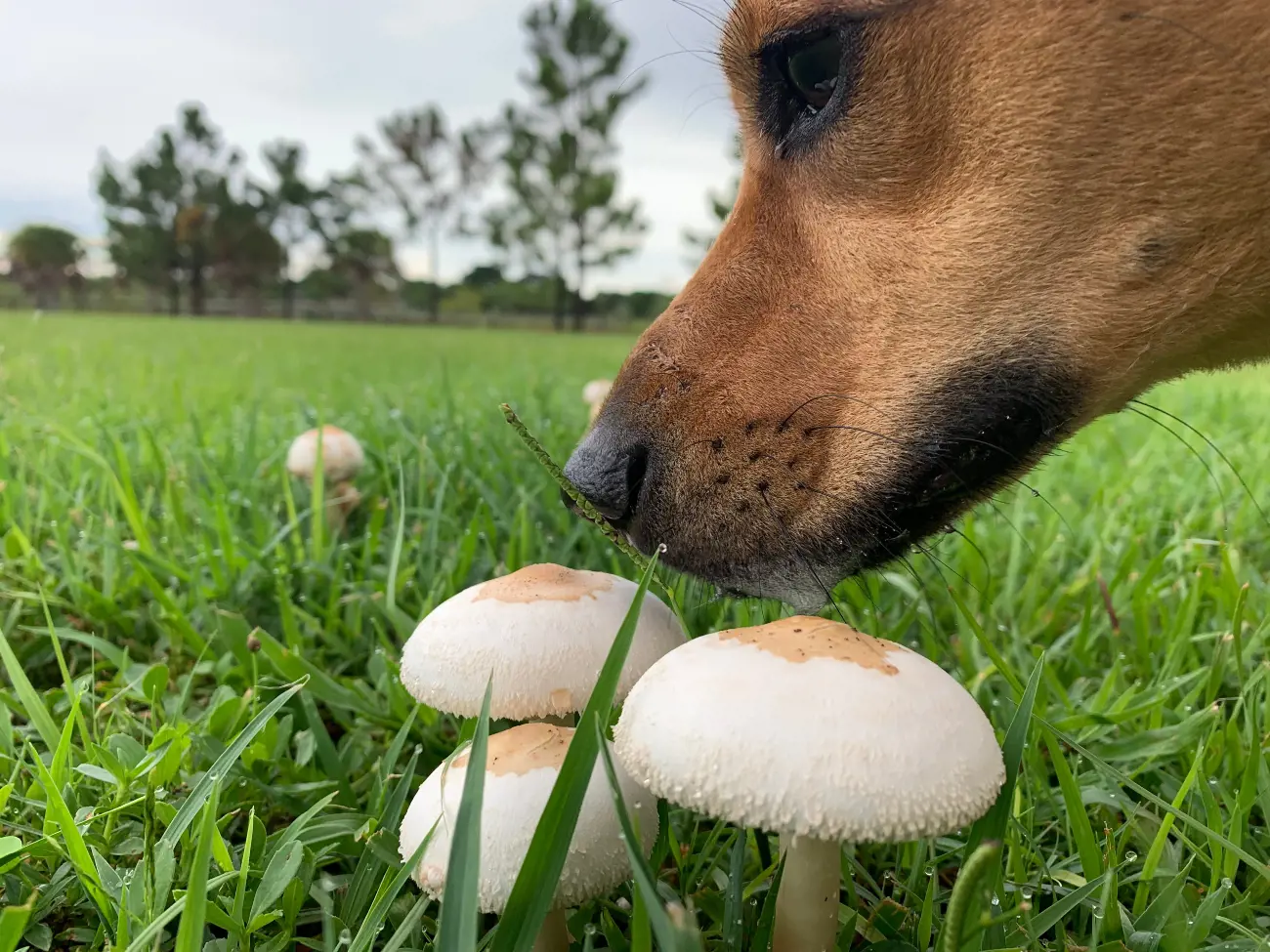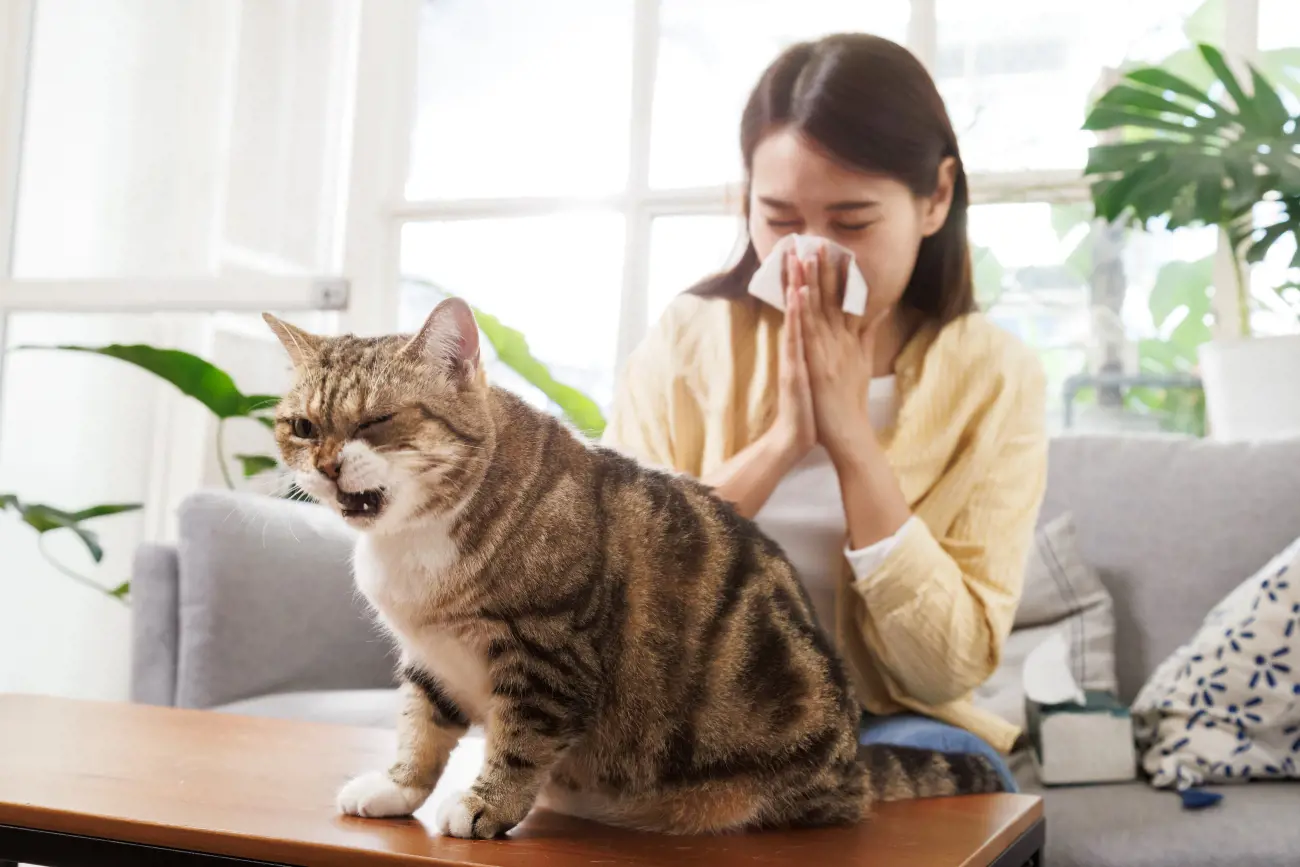Why do cats snore? Uncovering the mystery behind feline snoring
2nd January, 2025
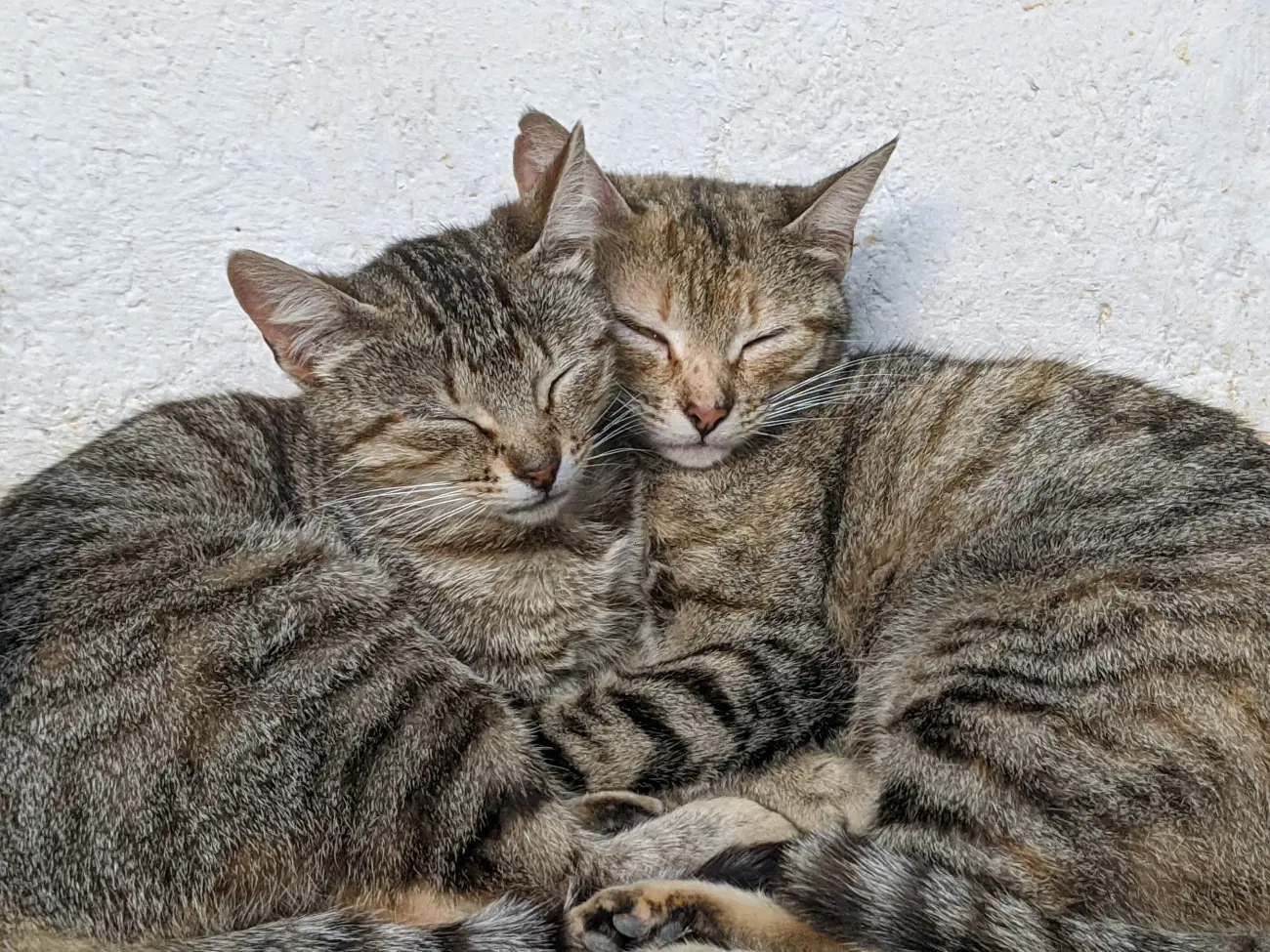
Cats, just like us, can snore in their sleep. Many pet owners worry about this common behaviour and wonder if their furry friends might have health problems, as cat's snoring can sometimes indicate underlying issues. A cat’s occasional snoring rarely causes concern, but sudden or constant snoring could point to mechanisms that need a vet’s attention.
Several factors can make your cat snore - their sleeping position, weight, age, or specific breed traits play a role. Respiratory infections or airway problems might cause some cats to snore. Cat insurance gives owners peace of mind and enables immediate vet care access if their cat’s snoring becomes worrisome. Your cat’s health and well-being depend on your ability to spot normal versus concerning snoring patterns.
This detailed guide explores why cats snore and helps you create the perfect sleep environment for your pet. You’ll discover how to tell regular sleep sounds apart from warning signs that need professional help.
Understanding cat snoring
Cat snoring is a common phenomenon that can be caused by various factors, including anatomy, sleeping positions, and medical conditions. While it’s not always a cause for concern, it’s important to understand the underlying reasons for your cat’s snoring to ensure their overall health and well-being.
Just like humans, cats can snore for a variety of reasons. Sometimes, it’s as simple as the position they’re sleeping in, while other times, it might be due to more complex anatomical or health-related issues. Understanding why your cat snores can help you determine whether it’s a harmless quirk or something that needs a vet’s attention.
Anatomy and physiology of snoring in cats
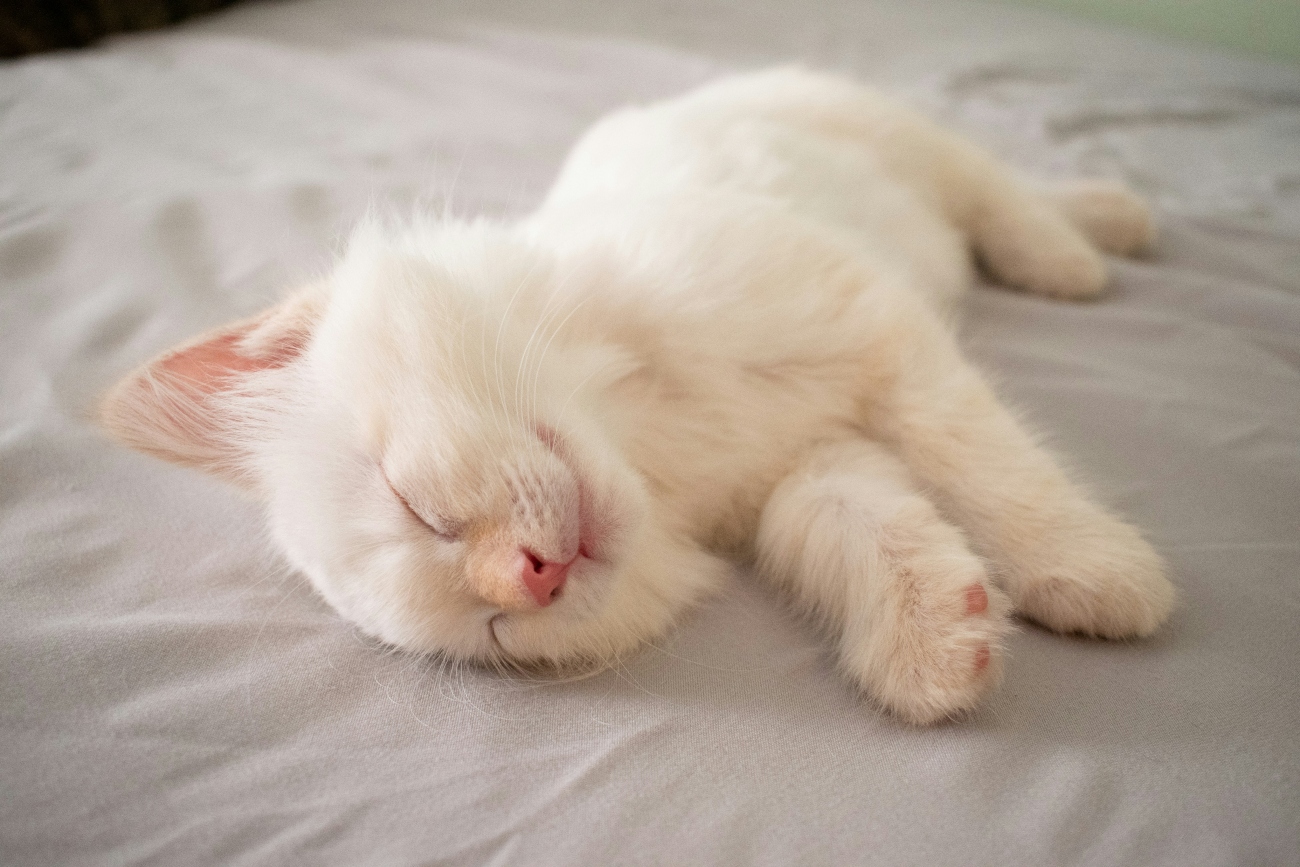
Snoring in cats occurs when the airways in the nasal passages and throat vibrate, causing the characteristic sound. The anatomy of a cat’s nose and throat plays a significant role in determining their likelihood of snoring. Brachycephalic cat breeds, such as Persians, are more prone to snoring due to their flattened facial features, which can lead to narrower nasal passages and a longer soft palate.
The nasal passages of a cat are divided into two main sections:
-
The nasal cavity: This is responsible for filtering, warming, and humidifying the air
-
The nasopharynx: This is the upper part of the throat that connects the nasal cavity to the larynx
When a cat breathes in, the air passes through the nasal cavity and nasopharynx, causing the tissues to vibrate and produce the snoring sound.
In addition to anatomy, sleeping positions can also contribute to snoring in cats. Cats often sleep in a curled-up position, which can cause their airways to become restricted, leading to snoring. Furthermore, overweight cats are more likely to snore due to excess weight putting pressure on their respiratory system.
It’s important for cat parents to monitor their cat’s snoring and seek veterinary attention if they notice any changes in their cat’s breathing patterns or overall health. By understanding the anatomy and physiology of snoring in cats, you can better identify potential health issues and take steps to look after your cat’s well-being.
Environmental factors affecting cats snoring
Your cat’s breathing patterns during sleep depend heavily on your home’s environment. Poor indoor air quality affects feline respiratory health by a lot. Research by Lin (2018) shows that unacceptable PM2.5 levels (above 35 μg/m3) strongly link to respiratory diseases in cats. Respiratory issues such as cat flu can exacerbate snoring in cats, making it important to maintain a healthy environment.
Air quality and humidity's effect
Your cat’s respiratory comfort needs proper humidity levels. Cats thrive best in humidity between 30% and 50%. A humidifier near your cat’s favourite sleeping spot helps reduce snoring in very dry areas. This simple addition makes breathing more comfortable for your feline friend. Poor air quality can also lead to upper respiratory infections, which can increase the likelihood of snoring in cats.
Temperature and sleeping conditions
Your cat’s breathing patterns and sleep quality change with temperature. Higher temperatures can trigger different respiratory responses and might increase snoring. A sleeping environment with moderate temperature helps your cat sleep better and breathe easier. Understanding your cat's sleep cycles can also help, as different stages of sleep can affect their breathing and snoring patterns.
Seasonal allergies and irritants
Your cat might develop allergies to many environmental triggers that cause or worsen snoring. Common allergens include:
-
Pollen and grass
-
Dust and mildew
-
Household cleaning products
-
Smoke and perfumes
Environmental allergies follow seasonal patterns, and symptoms often get worse during specific times of the year. Your cat might have an allergic reaction if their snoring suddenly increases or comes with sneezing or wheezing. Good ventilation and regular cleaning help reduce these irritants. Air quality problems can lead to breathing issues and make allergies worse.
Pro tip: An air purifier with a HEPA filter in your cat's favourite rooms helps reduce airborne allergens and improves overall air quality.
Lifestyle habits and snoring prevention
A healthy lifestyle plays a vital part in reducing your cat’s snoring tendencies. Research shows that physical activity patterns change by a lot as cats age. Both activity levels and jumping frequency decrease over time. Remember, not all cats enjoy the same types of toys, so it's important to experiment and find what your cat prefers.
Exercise and activity levels
Your cat needs regular exercise to stay healthy and reduce snoring. Interactive play sessions help your cat's agility and natural hunting instincts. You can try these engaging activities:
-
Using wand toys with feathers or mice attachments
-
Setting up climbing spaces and window perches
-
Rotating toys to prevent boredom
-
Providing solo play options like motorized toys
Sleeping positions and priorities
Your cat’s sleeping position can affect their breathing patterns. Your cat’s snoring might stop if you gently reposition them when they sleep in an unusual position.
Pay attention to whether the snoring stops after they change positions. This helps identify if the position is the main cause. While it might be tempting to try and cover your cat's nose to stop the snoring, it's not a practical solution and can cause distress.
Diet and weight management for overweight cats
Weight management becomes important especially when you have studies showing nearly 60% of cats are either overweight or obese. Extra weight adds fat around the upper airways and makes snoring more likely. Your veterinarian may create a tailored plan that has:
Proper nutrition: High-protein, low-carb diets help maintain healthy weight. Watch portion sizes and avoid free-feeding if your cat overeats. Adult cats usually maintain a healthy weight between 3.6-4.5kg. Regular weigh-ins help track progress.
Note that weight loss should happen gradually under veterinary supervision to protect your cat's health and well-being throughout the process.
Age-related changes in cat sleep patterns
Your cat’s sleep patterns change naturally with age. Senior cats need substantially more rest than younger ones. Studies show older cats sleep 16-20 hours daily, while adult cats typically sleep 12-15 hours. If your cat suddenly starts snoring, it could be a sign of an underlying health issue that needs veterinary attention.
How aging affects breathing during sleep
The soft palate becomes more flaccid as cats age, which leads to more snoring. Weight gain and reduced muscle tone can affect their breathing patterns during rest.
You should monitor your cat if you notice loud or rapid breathing during sleep. These changes could point to health issues. For snoring cats, especially seniors, it's important to monitor their breathing and consult a vet if there are any concerning changes.
Common senior cat sleep issues
Sleep-wake cycles often change in senior cats. They may become more active at night and sleep more during the day. Look out for these signs of sleep-related problems:
-
Restlessness and night-time wandering
-
Increased vocalisation during night hours
-
Changes in breathing patterns
-
Difficulty finding comfortable sleeping positions
Adapting care for aging cats
Creating a comfortable sleep environment becomes more important as cats age. Your home should have multiple sleeping areas that are available with soft, supportive bedding to help with stiffness. Temperature control is a vital factor since older cats react more to environmental changes.
Veterinary check-ups become more important with age since cats excel at hiding illness until conditions worsen. Contact your veterinarian right away if you notice sudden changes in your cat's breathing or sleeping patterns, especially when combined with lethargy or loss of appetite.
Creating an optimal sleep environment
A perfect sleeping environment for your cat can substantially reduce snoring and help them sleep better. Your cat’s comfort and breathing patterns during rest depend on a well-laid-out sleep space that takes multiple factors into account. Brachycephalic cats, such as Persians, are particularly prone to snoring due to their flattened facial features.
Choosing the right bed and location
Cats need several sleeping spots throughout your home. They naturally move between different areas to stay comfortable. Here's what to look for in a bed:
-
Soft, fleecy materials for comfort
-
Tall sides for security and warmth
-
Easy accessibility, especially for senior cats
-
Machine-washable materials for hygiene
Keep beds away from noisy appliances and high-traffic areas. Quiet corners in bedrooms or living rooms work best. Note that cats prefer their sleeping areas separate from food bowls and litter trays.
Managing air quality and temperature
Clean air is a vital part of preventing breathing problems that cause snoring. You should install an air purifier with a HEPA filter that captures pet dander, hair, and other airborne particles. Your cat's sleeping area needs consistent warmth without being hot. Good ventilation ensures fresh air moves through the space.
Establishing healthy sleep routines
A regular bedtime routine helps your cat relax naturally. Try some interactive play before a quiet period. Avoid disturbing your sleeping cat because this can trigger defensive reactions and disrupt their sleep patterns. When you wash their bedding, keep at least one bed with their familiar scent - this helps them feel secure. If you notice any severe symptoms such as laboured breathing, contact your vet immediately.
Conclusion
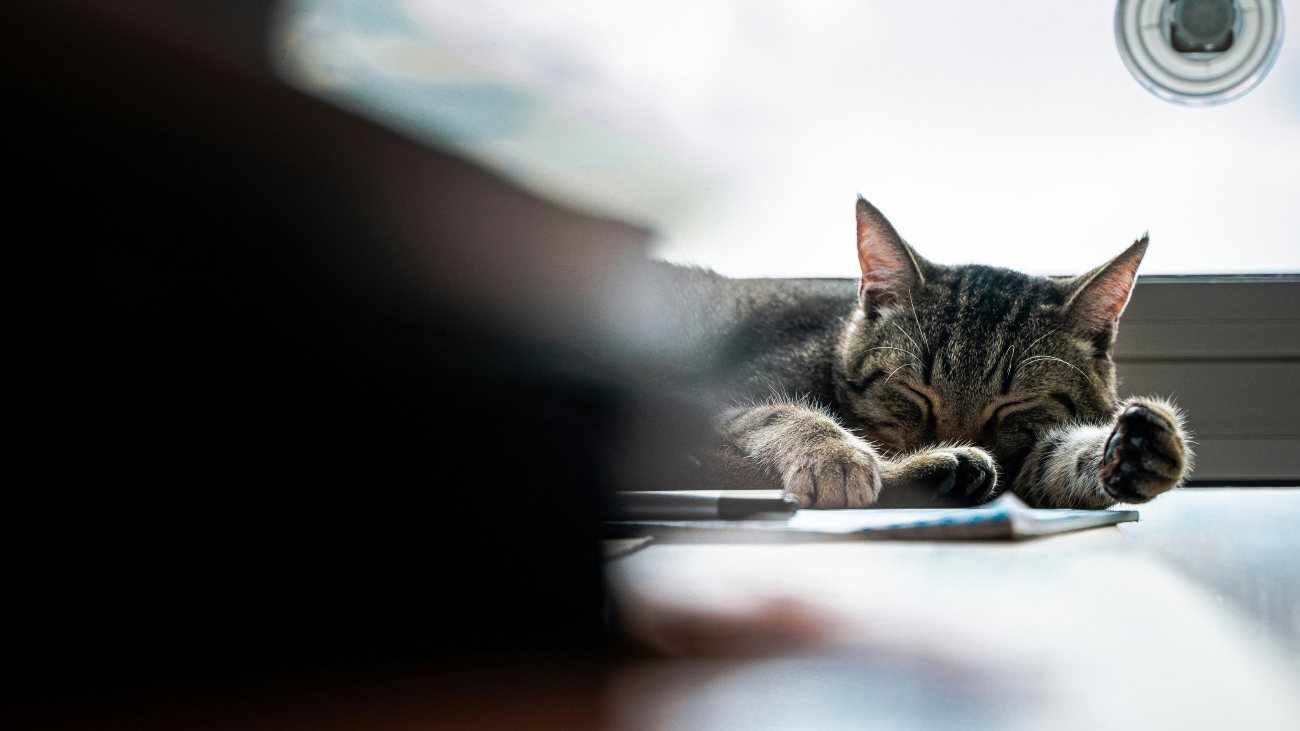
Your cat's snoring patterns can tell you a lot about their health and well-being. Most cats snore occasionally, especially when they sleep in certain positions or belong to specific breeds. Any sudden changes should catch your attention. Sleep quality depends on several things - clean air, comfortable temperature, daily exercise, and a cosy sleeping spot all play a role.
Keeping an eye on your cat's breathing during sleep becomes crucial with age. Different snoring patterns or intensity could point to health issues that need a vet's attention. Your cat needs regular vet visits to spot potential health concerns early and maintain healthy sleep patterns throughout their life.
A good insurance plan helps you stay worry-free as a pet parent. You can get a cat insurance quote on our website or talk to our pet insurance team at 0330 102 5748 for more information. A comfy sleep environment, proper weight management, and dealing with environmental triggers can improve your cat's sleep quality and overall health.
Helpful Pages
Recent Posts
Pet Insurance Quote
- 98% claims paid *
- Claims paid directly to vets
- 24/7 vet video consultations
- Interest free monthly payments
